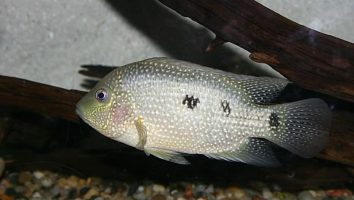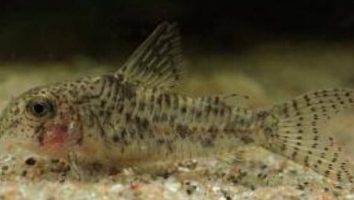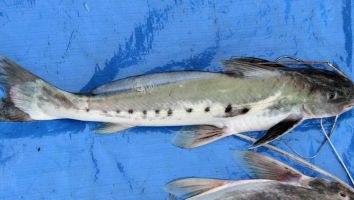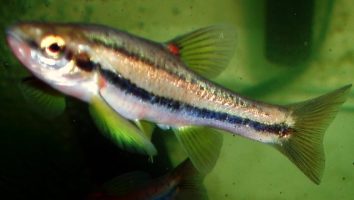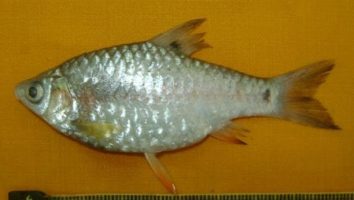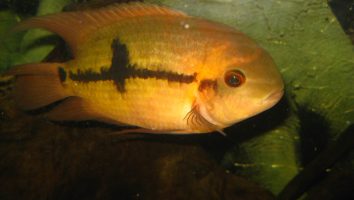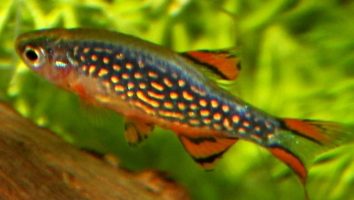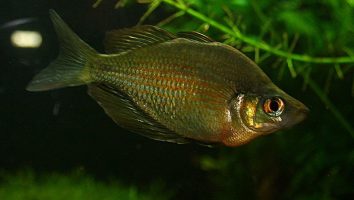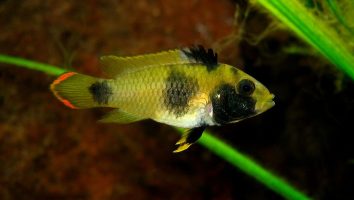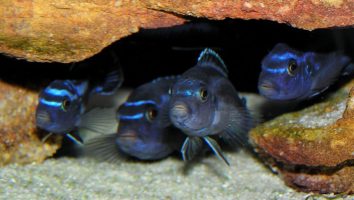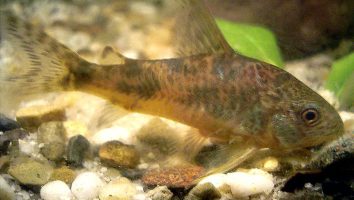The redbreast sunfish is a beautiful freshwater fish that is popular in the aquarium trade.
This fish is relatively easy to care for and is a great addition to any community tank.
The redbreast sunfish is a peaceful fish that will get along with most tank mates.
This guide will teach you everything you need to know about redbreast sunfish care. You’ll learn about their diet, size, lifespan, and more!
Table of contents
Species overview
The Redbreast sunfish (Lepomis auritus) is a species of freshwater fish that is native to the southeastern United States.
They are typically found in slow-moving streams and rivers with a lot of vegetation. This fish is also quite common in ponds and lakes.
Redbreast sunfish are relatively small, only reaching about 8 inches in length at most. They are quite popular in the aquarium trade due to their bright colors.
These fish are mostly herbivorous, but they will also eat small insects and crustaceans.
Appearance
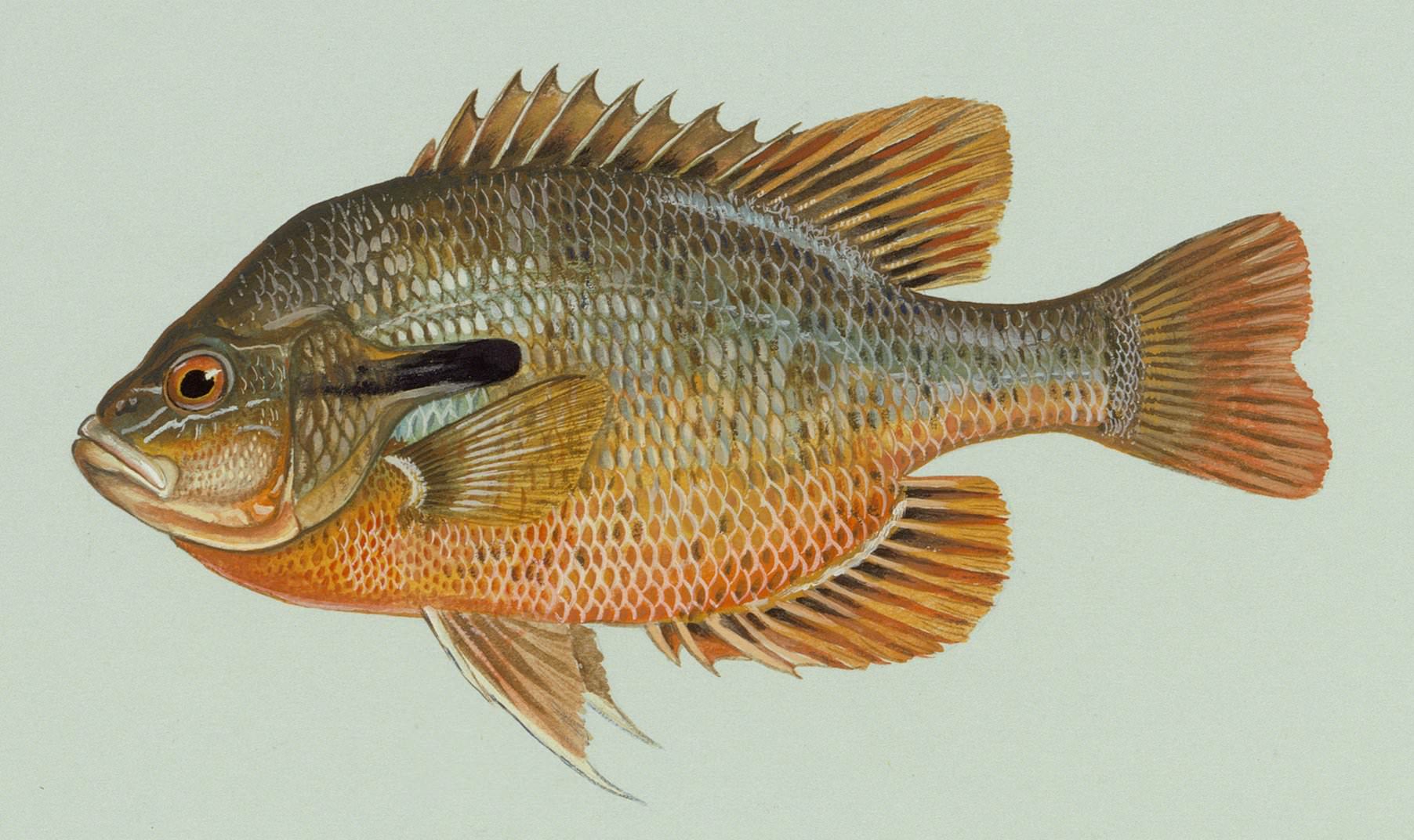
The Redbreast sunfish is a beautiful little fish that is easily recognizable. As their name suggests, these fish have a very red breast that extends from their chin all the way down to their belly.
This color fades into a yellowish hue on the sides of the fish and then into a bluish-green on their tops. There is also a dark horizontal stripe that runs along their sides.
This stripe is usually broken up into a series of spots. The number of spots will vary from fish to fish but they typically have between 10 and 12.
The fins on the Redbreast sunfish are also quite colorful. Their dorsal fin is red with a black border. The anal fin is also red but doesn’t have the black border.
The caudal and pectoral fins are both transparent with a slight yellowish hue. The ventral fins are also transparent but have a reddish hue.
These fish have a fairly standard body shape for a sunfish. They have a somewhat compressed body that is oval in shape.
The mouth of the Redbreast sunfish is fairly large and extends past the eye. They have small teeth that are arranged in a brush-like pattern.
Lifespan
Redbreast sunfish have a lifespan of about 4 years. This can be impacted by a number of different things such as water quality, diet, and stress levels.
Providing them with the best possible environment and care will obviously help them to live a longer and healthier life.
Size
The redbreast sunfish is a small fish, typically only reaching about 4-6 inches in length at full size.
Tank
Tank Size
For a single Redbreast sunfish, a 20 gallon tank is the minimum size you should consider. If you’re looking at keeping a school of these fish together, you’ll need at least 30 gallons for a small group or 50 gallons for a larger school.
Redbreast sunfish are active little fish that love to swim and explore. They’re not fussy about plants or decorations, but they do need some hiding places and places to swim in the open.
Water Parameters
The redbreast sunfish is a freshwater fish that is found in streams, rivers, and lakes throughout the southeastern United States. They prefer slow-moving water with plenty of vegetation.
In the wild, the redbreast sunfish typically inhabits waters with the following parameters:
- Water temperature: 70 to 77 degrees Fahrenheit
- pH levels: 6.5 to 7.5
- Water hardness: 2 to 8 dGH
- Alkalinity Levels: 4 to 8 dKH
What To Put In Their Tank
Redbreast sunfish are gorgeous fish that make a great addition to any freshwater aquarium. They’re peaceful, active, and relatively easy to care for which makes them a great choice for beginner aquarists.
When it comes to setting up their tank there are a few key things you’ll need to take into consideration.
The first is the substrate. Redbreast sunfish love to dig and sift through the substrate looking for food. A soft, sandy substrate is ideal for them.
The second is plants. These fish are known to nibble on plants, so you’ll need to choose something that can withstand a little bit of abuse. Hornwort, water wisteria, and java moss are all great choices.
The third is hiding places. Redbreast sunfish are relatively small fish and can be easily bullied by larger tankmates. To help reduce stress levels and give them a place to hide we recommend adding some driftwood, rocks, or caves to their tank.
Common Diseases
The Redbreast sunfish is a hardy fish that doesn’t usually fall ill. However, there are still a few diseases that you should be aware of.
The most common disease that these fish experience is ich. Ich is a very common freshwater parasite that can affect any fish, no matter how big or small.
The most obvious sign of ich is the presence of white spots on the body of your fish. If you notice this, it’s important to act fast. Ich can spread quickly and kill your fish if it’s left untreated.
Other potential diseases include infections, parasites, and fungal infections. These are all fairly common in freshwater fish and can be treated with the help of a vet.
As with any other fish, the best way to prevent these diseases is by maintaining clean and stable water conditions. A well-maintained tank will lead to healthier fish who are less likely to fall ill.
Behavior & Temperament
The redbreast sunfish is a peaceful fish that is known to be shy. They are not aggressive and will not bother other fish in the tank. They are also known to be good jumpers, so it is important to have a lid on your tank.
The redbreast sunfish is a schooling fish, so it is important to have at least six of them in your tank. They are known to be social creatures and will often swim in groups.
These fish are not known to be fin nippers, but they may eat smaller fish. It is important to make sure that the fish in your tank are the appropriate size for the redbreast sunfish.
The redbreast sunfish is a timid fish that may be scared by larger fish. It is important to make sure that the fish in your tank are not too aggressive.
Tank Mates
The best tank mates for Redbreast sunfish are other peaceful fish that occupy different parts of the water column. These fish are native to North America and prefer slow-moving waters.
As a result, they’re not particularly fast or agile.
Other fish that like to stick to the bottom or middle of the tank are ideal. This way, the Redbreast sunfish can do their own thing without getting bullied.
Here are some compatible species to get you started:
- Bluegill
- Pumpkinseed
- Longear sunfish
- Black crappie
- Green sunfish
- Banded sunfish
- Redear sunfish
- Yellow perch
- Brown trout
Breeding
The best time to breed redbreast sunfish is in the spring when the water temperatures start to warm up. You can breed them in an aquarium, but it’s best to do it in an outdoor pond.
Set up your breeding pond with plenty of hiding places and vegetation. Then, add some rocks or gravel to the bottom. The pond should be at least 10 feet wide and 3 feet deep.
When everything is in place, add your fish. You’ll need two males for every female. Redbreast sunfish are polygamous, so the males will compete for the attention of the females.
Once the fish are in the pond, they’ll start to spawn. The female will lay her eggs in the vegetation. The male will then fertilize them.
Spawning usually takes place at dawn or dusk. You may see the fish chasing each other and thrashing around in the water. This is normal behavior.
After the eggs are fertilized, the female will leave the area. The male will stay and guard the eggs until they hatch.
It takes about a week for the eggs to hatch. When they do, the fry will be free-swimming and ready to start eating. You can feed them live foods like brine shrimp or bloodworms.
As they grow, you can transition them to pellets or flakes.
Conclusion
The Redbreast Sunfish is a beautiful fish that is perfect for the beginning fish keeper. They are easy to care for and are very peaceful fish. They are also great additions to community tanks.
We highly recommend this fish to anyone who is looking for a low maintenance fish that is still very beautiful.

